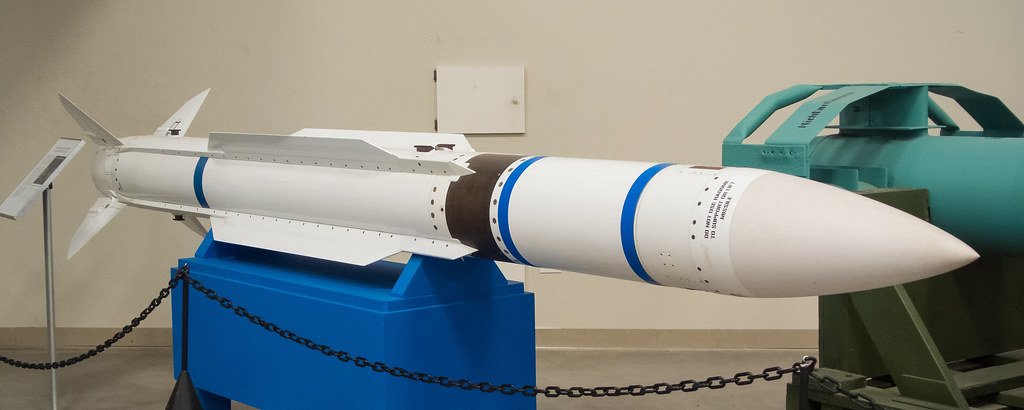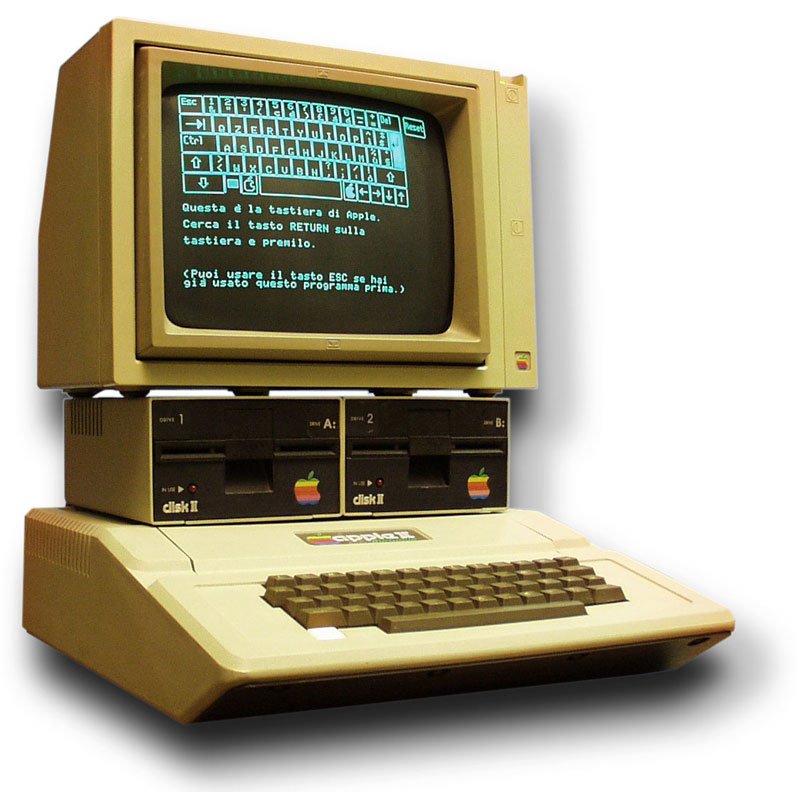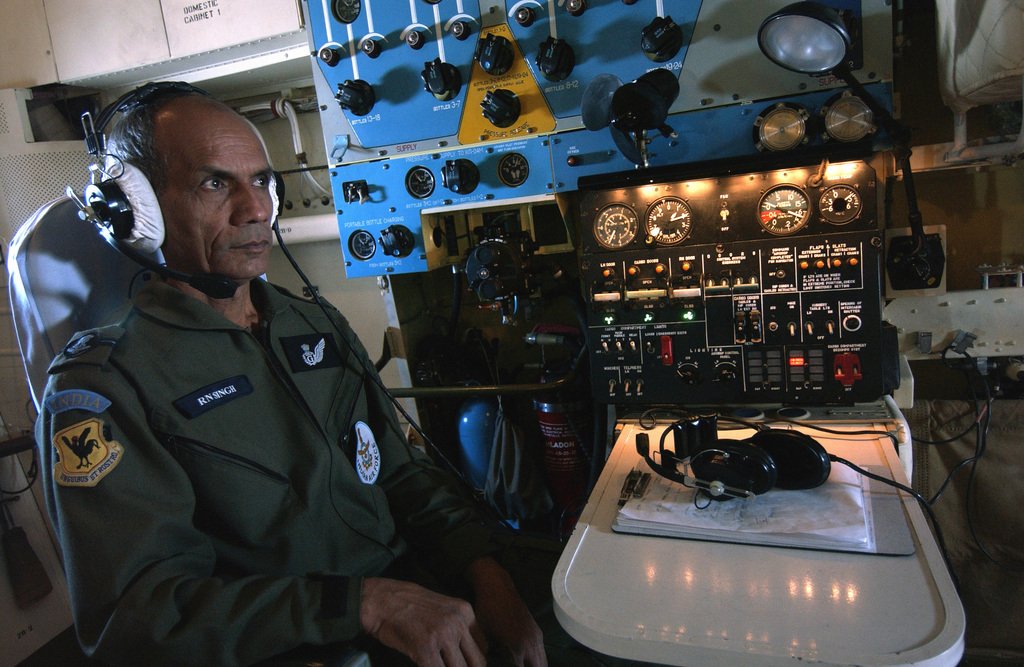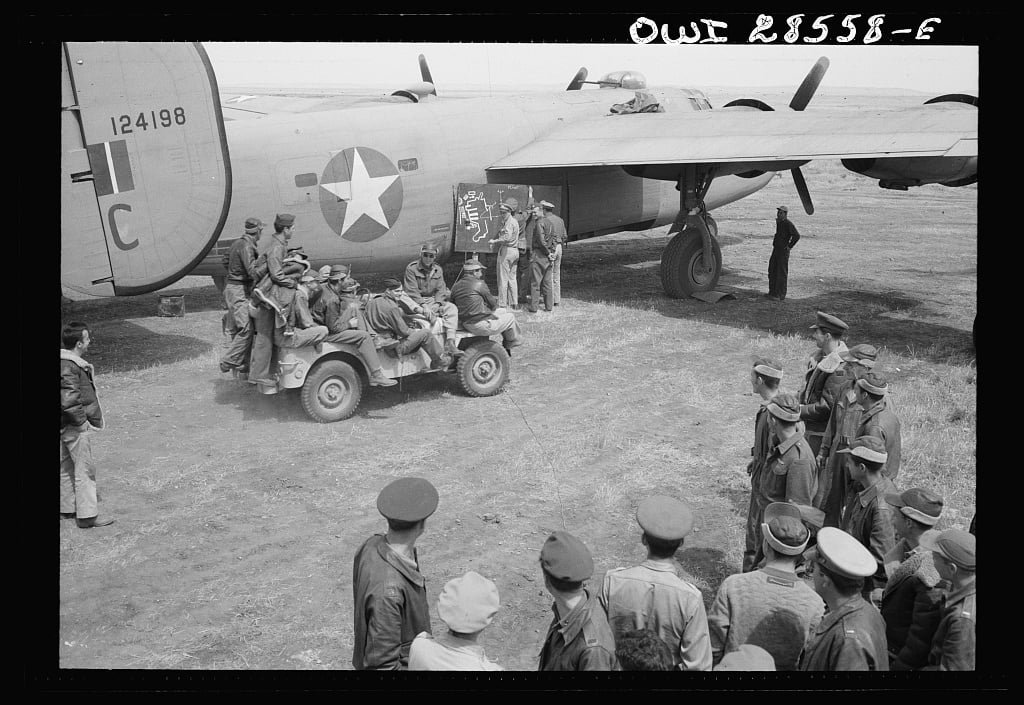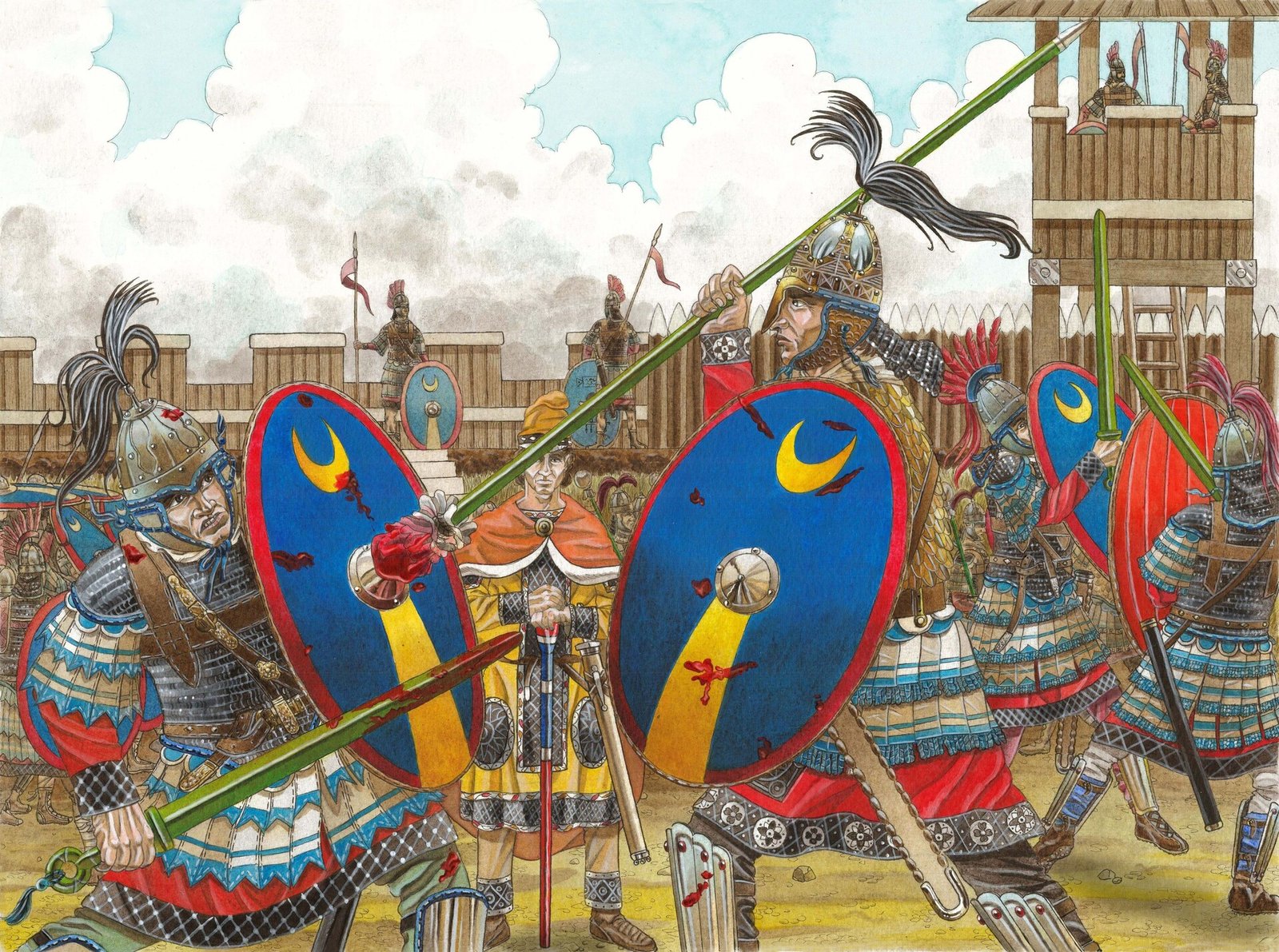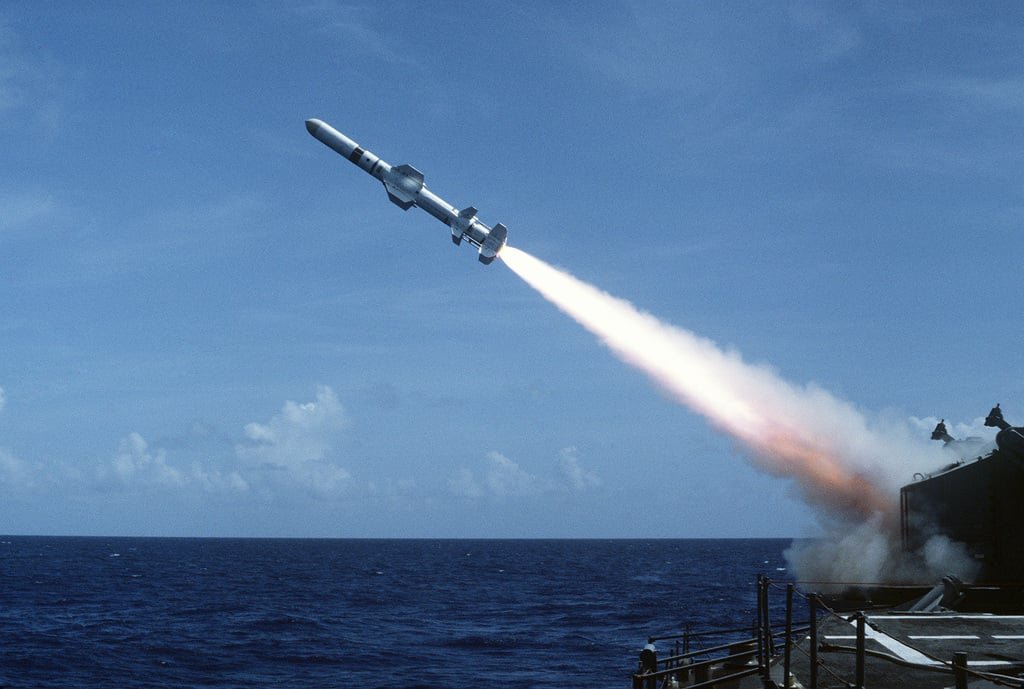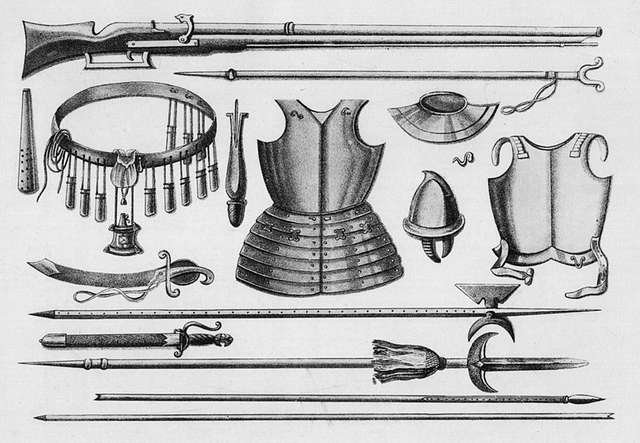The evolution of American fighter jets spans from the intense dogfights of World War I to the state-of-the-art stealth technology employed today. This transformative journey not only highlights the remarkable advancements in aviation but also underscores the strategic shifts and technological innovations that have played a pivotal role in shaping United States air superiority. Embark with us on a high-flying tour as we delve into the evolution of American fighter jets, examining key milestones, iconic aircraft, and the future of aerial warfare.
Table of Contents
Before we dive into the depths of this exploration, let’s address some pertinent questions:
What are the evolution of the US fighter jet?
The evolution of US fighter jets, as categorized by a NASA web publication, unfolds through five stages: pioneer (straight wing), marked by early innovations; swept wing, introducing enhanced aerodynamics; transonic, showcasing increased speed capabilities; the 1960s and 1970s, witnessing advancements leading to iconic models like the F-15, F-16, and AV-8A; and finally, culminating in cutting-edge aircraft technologies by 2004. This progression reflects a continuous commitment to innovation and adaptation, shaping the trajectory of American air power.
What are the 5 generations of fighter planes?
The five generations of fighter planes are as follows:
First Generation (Mid 1940s to Mid 1950s)
- Subsonic Speed
The initial generation featured subsonic jet fighters that laid the foundation for future developments.
- Limited Technology
Basic avionics and weaponry with a focus on air-to-air combat.
Second Generation (Mid-1950s to Early 1960s)
- Supersonic Capability
The introduction of supersonic speed capabilities marked a significant advancement.
- Swept Wings
Aircraft design evolved with swept-wing configurations for enhanced performance.
- Basic Radar
Early radar systems were integrated for improved situational awareness.
Third Generation (Early 1960s to 1970)
- Advanced Avionics
Significant improvements in avionics, including radar and navigation systems.
- Beyond Visual Range (BVR) Capability
The ability to engage targets beyond the visual range.
- Introduction of Air-to-Ground Roles
Expanded mission capabilities to include ground attack.
Fourth Generation (1970 to Late 1980s)
- High Maneuverability
Enhanced agility and maneuverability in air-to-air combat.
- Advanced Radar Systems
More sophisticated radar systems for increased target detection.
- Multirole Capability
Increased versatility with the ability to perform air-to-air and air-to-ground missions.
Fourth and a Half Generation (Late 1980s and Into the 90s)
- Improved Avionics
Further advancements in avionics and sensor technologies.
- Stealth Technology
The integration of rudimentary stealth features for reduced radar cross-section.
- Continuing Multirole Capability
Enhanced ability to perform a variety of roles in modern air warfare.
What was the first American fighter jet?
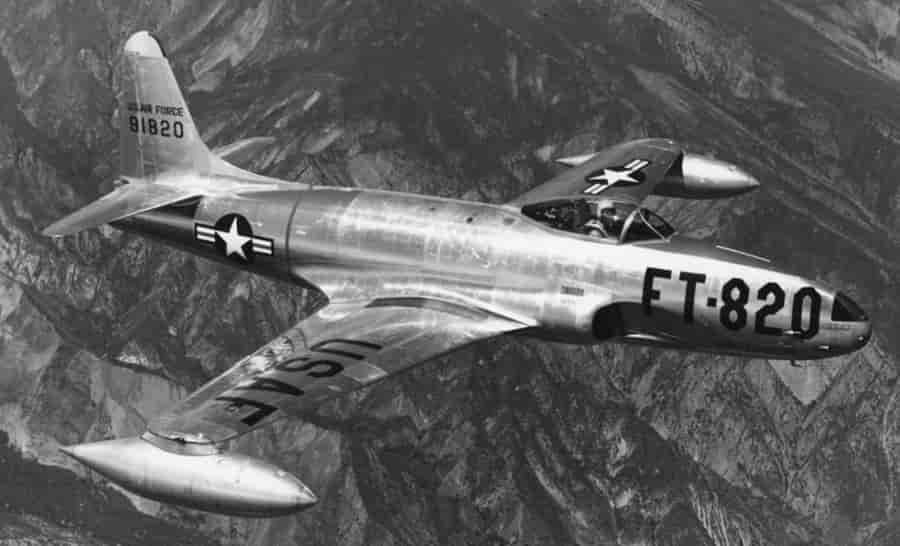
The first American fighter jet was the Lockheed F-80C Shooting Star. Designed in 1943, the XP-80 prototype made its maiden flight on January 8, 1944. The Shooting Star achieved several significant milestones, including being the first American aircraft to surpass 500 mph in level flight. It also holds the distinction of being the first American jet airplane manufactured in large quantities and the inaugural U.S. Air Force jet deployed in combat. This pioneering jet played a crucial role in shaping the future of American aviation during its early years.
Now equipped with a foundational understanding, let’s delve into the heart of the blog, exploring the captivating evolution of American fighter jets.
The Pioneering Years
In the early 20th century, a period marked by experimentation and the infancy of fighter aircraft, the Pioneering Years emerged as a transformative era catalyzed by the onset of World War I and the birth of aerial combat. American aviators, exemplified by legends like Eddie Rickenbacker, took to the skies in aircraft such as the iconic SPAD XIII, laying the groundwork for the evolution of fighter jets.
Early 20th Century Origins
- The Pioneering Years in aviation find their roots in the early 20th century.
- Fighter aircraft, with experimental designs and limited capabilities, were in their formative stages.
World War I and Aerial Combat
- World War I marked the initiation of aerial combat, a pivotal moment in aviation history.
- American aviators, including the renowned Eddie Rickenbacker, achieved legendary status during this era.
The SPAD XIII
- The SPAD XIII, emblematic of early fighter planes, played a pivotal role in shaping the narrative of aerial combat.
- This prominent aircraft of the time symbolized the innovative spirit driving early aviation.
Characteristics of Early Fighters
- Open Cockpits
Pilots showcased bravery in exposed cockpits, reflecting the experimental nature of early aircraft.
- Fabric-Covered Wings
Common in early fighter planes, fabric-covered wings were a distinctive feature.
Thrill of Aerial Maneuvering
- Pilots experienced the exhilaration of airborne maneuvering, navigating the skies with a sense of adventure.
- Armed with little more than a machine gun, aviators operated in a dynamic and unpredictable environment.
Setting the Foundation
- The Pioneering Years set the foundation for the evolution of fighter aircraft, influencing subsequent advancements.
- The courage and innovation displayed during this era paved the way for the extraordinary developments in American fighter jets in the decades to come.
Rise of the Mustang
As World War II erupted, the global aviation stage underwent a profound transformation, leading to the emergence of the P-51 Mustang as a pivotal game-changer. This iconic aircraft played a critical role in shaping the dynamics of air warfare, particularly highlighting the strategic importance of long-range escort fighters.
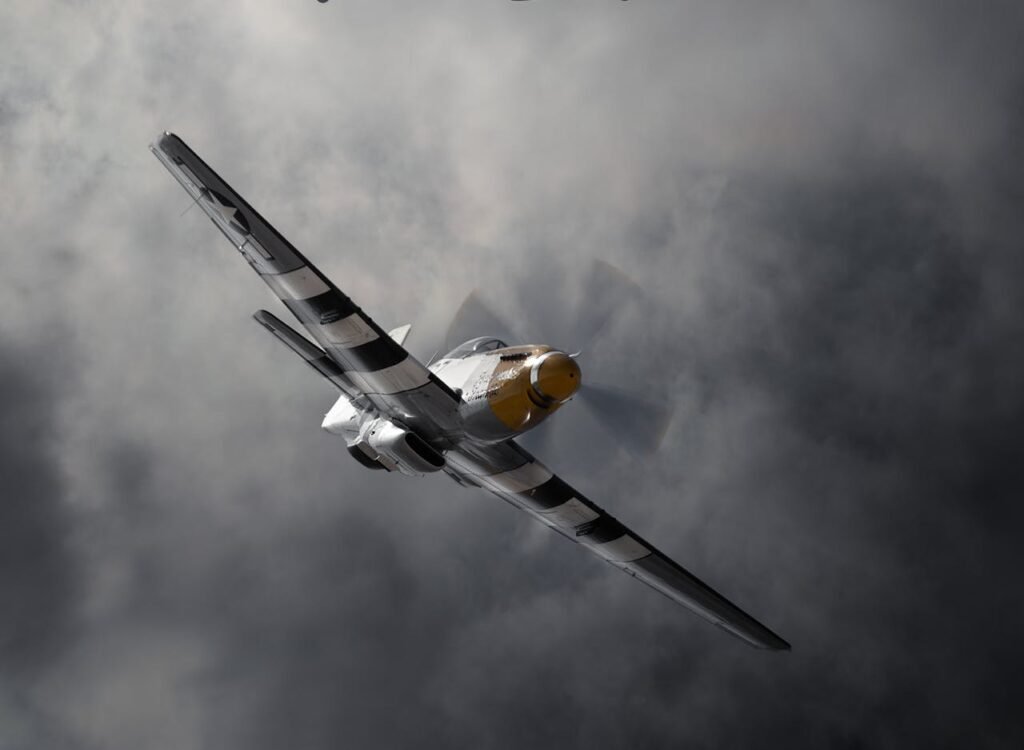
Significance of the P-51 Mustang
- Long-Range Escort Capability
The P-51 Mustang’s revolutionary contribution lay in its ability to serve as a long-range escort fighter. This capability allowed it to accompany and protect Allied bombers on deep-penetration missions into enemy territory, a factor crucial for the success of strategic bombing campaigns.
- Sleek Design and Powerhouse Engine
The Mustang’s sleek and aerodynamic design, coupled with the formidable Rolls-Royce Merlin engine, set it apart as a high-performance aircraft. This combination of design and power provided the Allies with a superior and versatile fighter.
- Securing Air Superiority
The P-51 Mustang played a crucial role in securing air superiority for the Allies. Its effectiveness in repelling enemy fighters and protecting bomber formations significantly contributed to the success of Allied air campaigns.
- Beginning of an Arms Race
The success of the P-51 Mustang marked the onset of an arms race among nations. Recognizing the strategic advantages of faster, more powerful fighter jets, nations intensified their efforts to develop advanced aircraft to gain a competitive edge in the evolving dynamics of aerial warfare.
Jet Age Dawns
In the post-World War II era, a transformative shift occurred with the dawn of the jet age, marked by the introduction of groundbreaking aircraft such as the F-86 Sabre and the MiG-15 during the Korean War. This pivotal period not only changed the face of aviation but also set the stage for a new era of aerial warfare.
F-86 Sabre and MiG-15
The F-86 Sabre and MiG-15 emerged as iconic symbols of the jet age. These aircraft showcased the capabilities of jet propulsion, providing enhanced speed and maneuverability compared to their propeller-driven predecessors.
Intense Dogfights
The Korean War became a crucible for jet-powered dogfights, pushing the boundaries of speed, altitude, and aerial combat tactics. Pilots engaged in intense battles that demonstrated the agility and firepower of jet aircraft.
Inception of Supersonic Flight
The jet age witnessed a monumental leap with the introduction of supersonic flight. The North American F-100 Super Sabre made history by becoming the first operational supersonic jet in the U.S. Air Force. This achievement marked a technological milestone, setting the stage for the development of faster and more advanced aircraft.
Advancements in Speed and Altitude
Jet-powered aircraft shattered previous limitations, reaching unprecedented speeds and altitudes. This not only transformed the nature of aerial warfare but also opened new possibilities for strategic and tactical maneuvers.
F-100 Super Sabre’s Supersonic Prowess
The North American F-100 Super Sabre, with its supersonic capabilities, exemplified the rapid advancements in aviation technology. Its introduction signaled a new era of air dominance, showcasing the United States’ commitment to staying at the forefront of technological innovation.
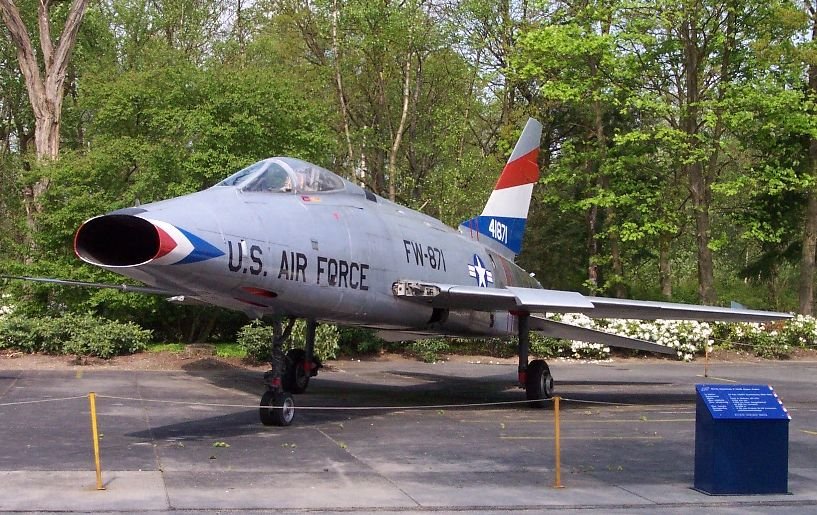
Impact on Aviation
The advent of the jet age had a profound impact on military aviation. It revolutionized tactics, emphasizing speed and agility, and paved the way for the development of more sophisticated and versatile fighter jets. The lessons learned from the intense dogfights in the Korean War laid the groundwork for future aerial warfare strategies, influencing the design and capabilities of subsequent generations of fighter aircraft.
Cold War Aviation Dynamics
The Cold War, spanning from the late 1940s to the early 1990s, ignited intense competition between the United States and the Soviet Union, transcending political ideologies to military capabilities. This rivalry significantly shaped the development of high-performance fighter jets like the F-104 Starfighter and F-4 Phantom II.
Geopolitical Arms Race
The Cold War’s geopolitical tension triggered a fierce technological arms race, particularly in aviation. Both superpowers vied for supremacy in aircraft development and military capabilities.
Iconic High-Performance Jets
The F-104 Starfighter and F-4 Phantom II epitomized the era’s high-performance jets, designed for versatility in air superiority, ground attack, and reconnaissance missions.
Versatile Multirole Design
Cold War-era fighter jets were engineered for versatility, seamlessly transitioning between roles on the battlefield. This adaptability addressed diverse challenges posed by potential adversaries.
Guided Missile Revolution
A pivotal shift occurred with the introduction of guided missiles, transforming the landscape of aerial warfare. This technological leap enabled extended-range precision engagements, reshaping air-to-air and air-to-ground tactics.
Impact on Aerial Warfare
The Cold War’s competitive environment fundamentally altered aerial warfare. High-performance, multirole aircraft and the integration of guided missile technology shifted strategies away from traditional dogfighting. Nations aimed to establish air superiority globally, influencing the strategic thinking and capabilities of military forces.
21st Century Dominance
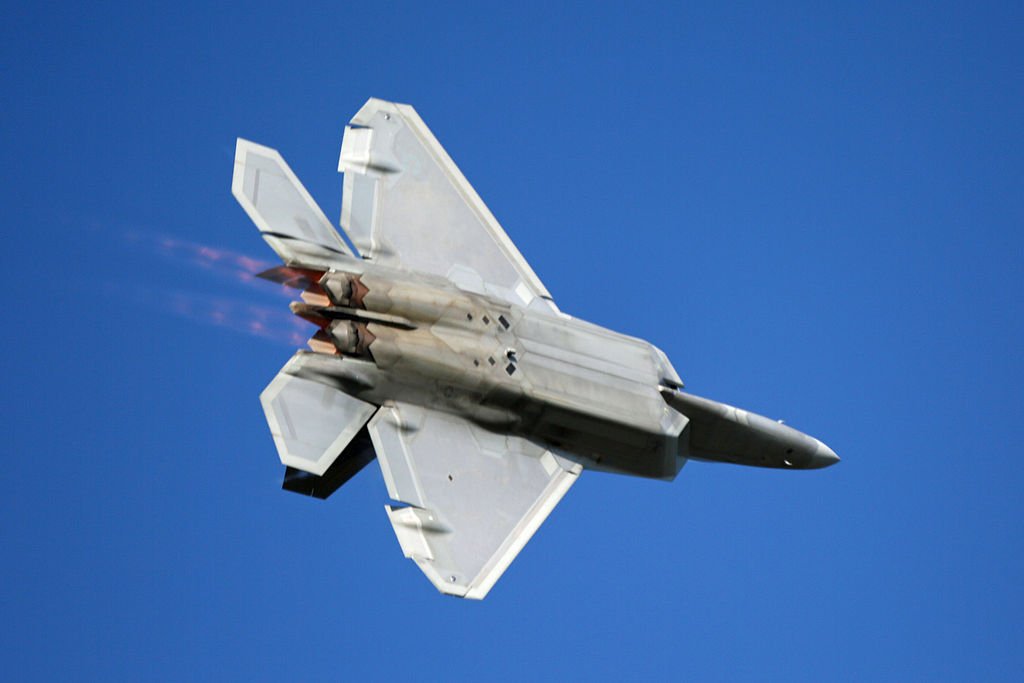
As we entered the 21st century, American fighter jets underwent a paradigm shift, embracing cutting-edge technology to establish dominance in the rapidly evolving landscape of aerial warfare. Two standout examples of this evolution are the F-22 Raptor and the F-35 Lightning II, both exemplifying advancements that set new standards in air superiority and multi-role capabilities.
F-22 Raptor
- Unmatched Agility
The F-22 Raptor is renowned for its unparalleled agility, allowing it to outmaneuver adversaries in the air. Its advanced flight control system and aerodynamic design contribute to its exceptional agility, giving it a decisive edge in dogfights.
- Stealth Capabilities
The F-22 incorporates state-of-the-art stealth technology, enabling it to operate undetected deep within enemy territory. This enhances its survivability and allows for covert operations, maintaining air superiority in contested environments.
F-35 Lightning II
- Multi-Role Prowess
The F-35 Lightning II is a versatile multi-role fighter designed to excel in a variety of missions. From air-to-air combat and ground attack to surveillance, the F-35 showcases a broad spectrum of capabilities, streamlining the need for multiple specialized aircraft.
- Integrated Warfare
Armed with advanced avionics and stealth features, the F-35 embodies the concept of integrated warfare. Its ability to seamlessly share information with other platforms enhances situational awareness, facilitating coordinated and efficient military operations.
Technological Advancements
- Advanced Avionics
Both the F-22 and F-35 boast cutting-edge avionics, featuring sophisticated radar systems, sensor suites, and data-sharing capabilities. These advancements enhance pilot awareness, enabling faster decision-making in dynamic and high-threat environments.
- Stealth Technology
Stealth remains a cornerstone of 21st-century fighter jet design. By minimizing radar cross-sections, these aircraft can operate with reduced risk of detection, providing a critical advantage in contested airspace.
Strategic Implications
- Air Superiority Assurance
The F-22 and F-35 play pivotal roles in maintaining air superiority, a cornerstone of military dominance. Their advanced capabilities allow them to control airspace, offering a decisive advantage in modern warfare scenarios.
- Adaptability and Flexibility
The multi-role capabilities of the F-35 reflect a strategic shift towards adaptable and flexible air assets. This versatility allows for a streamlined and efficient response to a diverse array of mission requirements.
The Future Unveiled
The evolution of American fighter jets propels forward with initiatives like the Next-Generation Air Dominance (NGAD) program and the development of uncrewed combat aerial vehicles (UCAVs). These concepts promise to redefine aerial warfare, introducing unprecedented capabilities and strategic advantages. NGAD represents a leap into a new era of air dominance, incorporating advanced stealth features and cutting-edge avionics. Simultaneously, the emergence of UCAVs introduces revolutionary flexibility and collaborative swarm tactics. The integration of artificial intelligence and autonomous systems further cements the United States’ commitment to maintaining an edge in the skies, ensuring adaptability to emerging threats and reinforcing global air superiority.
The evolution of American fighter jets is a testament to the nation’s commitment to air superiority and technological innovation. From the daring dogfights of World War I to the stealthy precision of the 21st century, each era has left an indelible mark on aviation history. As we soar into the future, the legacy of these iconic aircraft lives on, inspiring the next generation of aviators and ensuring that the skies remain a domain where American ingenuity continues to shine.



